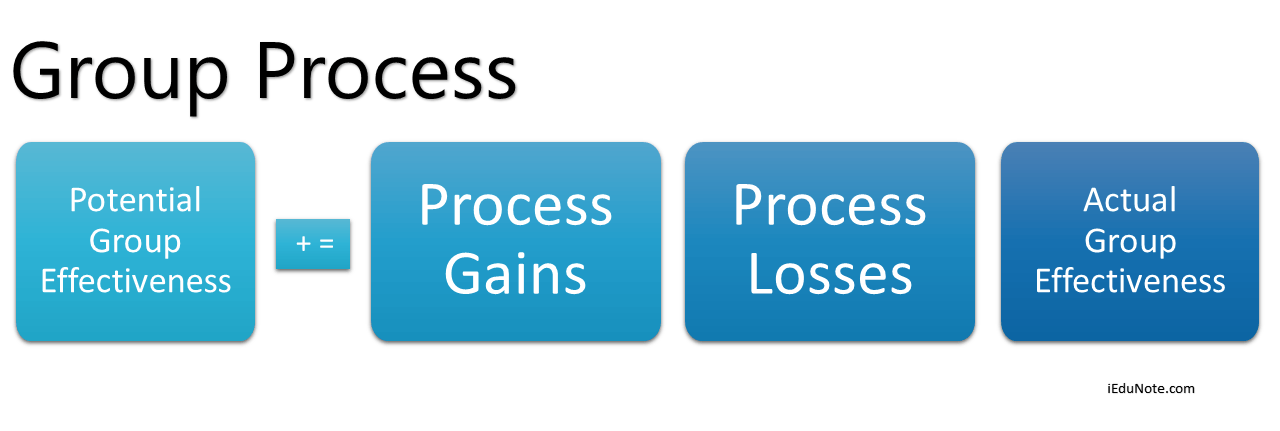Unlock conflict management and transform disagreements into opportunities for growth and innovation.
What is Conflict Management?
Conflict between individuals or groups is natural in industrial society. The need and urge to resolve conflict are equally natural. In industrial management, managers have always been trying to resolve conflict among the disputants in various ways to provide a stable and peaceful industrial life.
In the knowledge-driven economy, conflicts have been considered a strategy to increase organizational performance. Recently, it has become a burning issue in management literature.
Conflict is an unavoidable component of human activity that may be viewed as a situation in which the concerns of two or more individuals appear to be incompatible. It tends to occur when the behavior of one person is interfering with or obstructing the actions of another.
More broadly, conflict is an interactive process manifested in incompatibility, disagreement, or dissonance within or between social entities, i.e., individuals, groups, organizations, etc.
Sources of Conflict in Organizations
Within organizations, conflicts are inevitable and arise in case of disagreements between employer and employee over workloads, communication problems, and individual differences in needs, wants, goals, values, opinions, preferences, or behavior.
Explicitly, as human beings interact in organizations, differing values and situations create tension and conflict.
Different Levels and Outcomes of Conflict
Nowadays, every person is talking about conflict. Conflict may arise between two or more individuals or among groups, or between organizations or even societies.
However, the level of conflict may be different. Available evidence suggests that in constructive (functional) conflict, the conflicting parties may benefit from dealing with disagreement or dissonance and incompatible activities.
Changing Perceptions of Conflict
Traditionally, people often regard conflict as negative and harmful rather than as natural and pervasive in their experiences. From the organizational context, conflict can be normal and healthy, but a lack of tension is ultimately dull and stagnant and unlikely to foster creativity and growth.
When conflict is recognized, acknowledged, and managed in a proper manner, personal and organizational benefits will result.
The Managerial Perspective on Conflict
Even though some managers see conflict as something that should be avoided at all costs, others see conflict as presenting exciting possibilities if managed in a positive and constructive fashion.
Today’s effective manager seeks not to avoid but to manage conflict within the organization (Bagshaw, 1998; Jarrett, 2009; Rahim et al., 2002; Thomas, 1976).
Effects and Consequences of Conflict
Conflicts have both positive and negative effects on the organization. Conflict can be positive when it encourages organizational innovation and creativity, new looks at old conditions, the clarification of points of view, and the development of human capabilities to make quality decisions in managing conflict.
The Importance of Effective Conflict Management
If conflicts arise and are not managed properly, it will lead to delays in work, disinterest, lack of action, poor performance, and, in extreme cases, it might lead to a complete breakdown of the organization. So, it is the duty of management to manage the conflict well when it arises in their organization.
The main key to managing conflict is to understand conflicts, expect conflicts, and manage conflicts before they escalate into destructive forces.
Mediation and Third-Party Intervention
As a result, a body of knowledge has developed relating to conflict management. For conflict management to really take place and be successful, both parties need to have the sense that the settlement was fair and in their best interest.
The goal of third-party mediation is to allow people to settle their differences in a healthy way that allows everyone to save face. Decisively important are the individual skill, knowledge, tactics, grace, understanding, patience, trust, intelligence, impartiality, and integrity of the mediator to bring the views of the parties closer.
Understanding Conflict Management
Conflict management covers a wide range of areas of disagreement or dissonance within or between social entities, i.e., individuals, groups, and organizations. When conflict arises, it should be managed as early as possible to prevent a confrontation that may end in a strike, mass resignations, or a complete stoppage of operations.
While some use the term conflict resolution, conflict management is preferred because it is from differences that creativity and innovation arise.
From an organizational point of view, conflict among individuals or groups can create a significant positive or negative impact on organizational performance. However, people use different styles to manage conflict.
Conflict is an ever-present process in human relations. That is why organizations may have had to address their conflict management styles to enable them to manage their organizations effectively.
Organizations need to encourage functional (constructive, based on concepts and ideas) conflict and eliminate dysfunctional (usually interpersonal) conflict to improve organizational performance.
In constructive conflict, the conflicting parties may benefit from dealing with incompatible activities in such a way as to identify their differences, develop quality solutions, and strengthen their relationship more than they incur costs.
The Origins of Conflict
Conflict is the outcome of disagreement, distrust, and disbelief between two parties over some issues from the prior period, and these disagreements and disbeliefs must exceed a certain limit to exist. Here, two parties mean one person to another person, one person to self, one group to another group, and within the group.
For example, “He had a dispute with his brother,” “the irreconcilable differences between political parties like the familiar conflict between Political Party-One and Political Party-Two.” The use of words like dispute, disagreement, incompatibility, and difference of opinion helps us to understand that there is conflict.
A conflict exists when two people wish to carry out acts that are mutually inconsistent. They may both want to do the same thing, such as eating the same mango, or they may want to do different things where the different things are mutually incompatible, such as when they both want to stay together, but while one wants to go to the cinema hall, the other wants to go to the library.
Conflicts are complex processes. There are three factors that influence conflict. They are attitudes, behaviors, and structure. Each factor influences and is influenced by the other.
Factors Influencing Conflict
Conflict arises due to a variety of factors. These may be individual differences in goals, expectations, values, and proposed courses of action or suggestions about how best to handle a situation. When we add to these differences the unease arising out of a business’s future, conflict often increases.
Conflict is further aggravated in today’s context due to changes in technology, global shifting of power, political unrest, financial uncertainties, operational procedures, personnel, clientele, product line, financial climate, and even corporate philosophy and/or vision.
Conflict exists within an organization and is endemic, irrespective of whether or not it is desirable. Managers spend a lot of time dealing with conflict in its various forms.
In the past, management theorists used the term ‘conflict avoidance,’ but today, this phrase is increasingly being replaced with ‘conflict management.’ It recognizes that while conflict does have associated costs if handled constructively, it can also bring with it great benefits.
For example, confrontation, if understood from the right perspective, can lead to change, change can lead to adaptation, and adaptation can lead to survival and even prosperity. It fosters an understanding and appreciation of differences.
This viewpoint highlights a shift in the paradigm. Managers need to develop flexibility and new coping skills to function in a positive, productive way in the midst of unsettling events.
Commonalities in Conflict Definitions
After reviewing a number of recent definitions of conflict, we may conclude that although definitions are not identical, they overlap with respect to the following elements:
- Conflict includes opposing interests between individuals or groups in a zero-sum situation;
- Conflict does not necessarily involve beliefs by each party that the other will thwart (or has already thwarted) his or her interests;
- Such opposed interests must be recognized for conflict to exist;
- Conflict involves beliefs by each side that the other will or has already thwarted or dissatisfied its interests;
- Conflict is a process; it develops out of existing relationships between individuals or groups and reflects their past interactions and the contexts in which these took place and;
- Actions by one or both sides do, in fact, produce thwarting/to stop something from happening of the other’s goals.
Conflict and Competition
The nature of conflict can be better understood by distinguishing it from competition. Ambiguity in the distinction between competition and conflict has been a source of confusion. There are three major distinctions in the conceptualization of conflict and competition.
Boulding (1962) considers conflict as a subset of competition that exists when the potential positions of two behavior units are mutually incompatible.
Conflict is seen as a situation of competition in which the parties are aware of the incompatibility of potential future positions and in which each party wishes to occupy a position that is incompatible with the wishes of the other.
Another possible distinction is based on whether the behavior of the parties in interaction is regulated by rules and norms.
According to Mack (1965), competitive behavior is regulated, whereas conflict behavior is not.
Conflict and competition may not be distinguished by the presence or absence of rule structures nor by anything related to the phenomenology of interactions.
Conflicts can be placed along a continuum from cooperative to competitive, with the former occurring when there is a payoff cell or set of cells in which both parties receive satisfactory and high outcomes, and the latter occurring when only joint payoffs occur, resulting in one party winning while the other loses.
Conflict Management Technique
Conflicts have both positive and negative sides. The conflict management techniques are divided into two parts. The first one is conflict resolution technique, and the second one is conflict stimulation techniques, which are given below:
Conflict Resolution Techniques
9 conflict resolution techniques are;
- Problem-solving,
- Superordinate goals,
- Expansion of resources,
- Avoidance,
- Smoothing,
- Compromise,
- Authoritative command,
- Altering the human variable, and
- Altering the Structural variables.
Problem-solving
Face-to-face meetings of the conflicting parties for the purpose of identifying the problem and resolving it through open discussion.
Superordinate goals
Creating a shared goal cannot be attained without the cooperation of each conflicting party.
Expansion of resources
When the society of a resource causes a conflict, say, money, promotion opportunities, or office space expansion of the resource can create a win-win solution.
Avoidance
Withdrawal from, or suppression of the conflict.
Smoothing
Playing down differences while emphasizing common interests between the conflicting parties.
Compromise
Each party to the conflict gives up something of value.
Authoritative command
Management uses its formal authority to resolve the conflict and then communicates its desires to the parties involved.
Altering the human variable
Using behavioral change techniques such as human relations training to alter attitudes and behaviors that cause conflict.
Altering the Structural variables
Changing the formal organization structure and the interaction patterns of conflicting parties through job design, transfers, the creation of coordinating positions, and the like.
Conflict Stimulation Techniques
4 conflict stimulation techniques are;
- Communication
- Bringing in outsiders
- Restructuring the organization
- Appointing a devil’s adv
Communication
Using unambiguous or threatening messages to increase conflict levels.
Bringing in outsiders
Adding employees to a group whose backgrounds, values, attitudes, or managerial styles differ from those of present members.
Restructuring the organization
Realigning workgroups, altering rules and regulations, increasing interdependence, and making similar structural changes to disrupt the status quo.
Appointing a devil’s advocate
Designating a critic to purposely argue against the majority positions held by the group.

